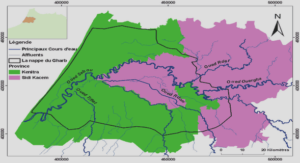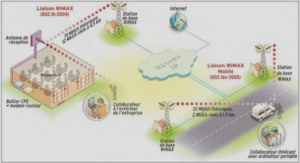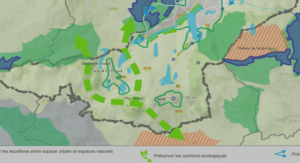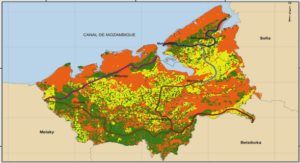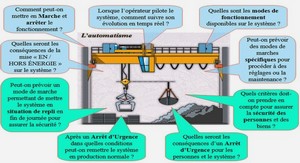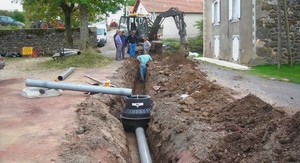Previous studies and experience from past earthquakes have demonstrated that there is a need to assess the seismic vulnerability of school buildings even in zones of moderate seismicity (Dolce, 2004). One may recall the adverse performance of schools during the Mw 8.0 Sichuan (China) earthquake in 2008 that resulted in the deaths of hundreds of children while at school (Revkin, 2008). Although such severe earthquakes are not likely in Québec, school buildings remain potentially vulnerable to moderate shaking as many may have inadequate exit pathways, and students/pupils may not be able to exit safely and quickly enough when an emergency occurs (Rodgers, 2012). In Québec, most school buildings have structural irregularities, and many would likely have poor seismic performance if subjected to moderate to strong earthquakes because they were designed and built in the 1960s and 1970s, before the introduction of modern earthquake-resistant design procedures in the National Building Code of Canada (NBC). Another compelling reason to assess their seismic vulnerability is that school buildings (secondary school buildings in particular) are possible candidates to serve as post critical shelters in case of disasters. Therefore, school buildings must remain structurally safe at all times (Chakos, 2004), hence the importance of adequately assessing their seismic vulnerability and post-earthquake functionality.
The present research contributes to a better assessment of seismic structural vulnerability and post-earthquake functionality of 16 schools designated as post-disaster shelters in Montréal by introducing the soil-building resonance as a parameter deemed to affect their vulnerability. The Analytical Hierarchy Process (AHP) is used to integrate this resonance parameter in the seismic structural vulnerability assessment of buildings, and to calibrate it with the adapted seismic screening method developed by Tischer (Tischer, 2012). Furthermore, the assessment of the seismic risk associated to the operational and functional components (OFCs) located in the schools is conducted by applying the method proposed in the CSA S832 standard (CSA, 2014) with an improved building structural vulnerability index,VB, that considers soil-building resonance effects and structural irregularities.
Seismic performance of school buildings and their OFCs during past high magnitude earthquakes
The poor seismic performance of school buildings in many countries has made their vulnerability assessment and retrofit a priority in moderate and high seismic zones. According to the Building and Housing Research Center of the United States (BHRC, 2005), school buildings are considered as vital structures, so upgrading them to sustain the effects of strong earthquakes is highly important to reduce loss of life. The good seismic performance of OFCs is essential to ensure the building safety and functionality, especially in school buildings designated as post-disaster shelters.
The recent September 2017, Mw 7.1 earthquake in Mexico City has killed 22 people at a school that collapsed (Singh et al., 2018). In eastern Turkey, the city of Van has been hit by a Mw 7.1 earthquake on October 23, 2011, which caused the collapse of 58 buildings, including some schools, and 604 human deaths and more than 2000 injured (222 of them were rescued under the collapsed buildings) (Taskin et al., 2013) . Moreover, during the February 2010, Mw 8.8 earthquake in Chile, around 2000 schools were heavily damaged (Ghosh & Cleland, 2012). In Pakistan, the Mw 7.8 earthquake that hit Kashmir on October 8, 2005, has badly affected the three main districts facilities such as hospitals, schools and services including police and armed forces (Peiris et al., 2008). The earthquake occurred during day school time hours, with resulted in the tragic death of approximately 19000 pupils and students, most of them trapped under the collapsed school buildings. Another example is the catastrophic Mw 9.3 earthquake and tsunami that struck Indonesia in 2004 and destroyed approximately 750 school buildings and damaged more than 2000 other, killing thousands of teachers and students (McAdoo et al., 2006). Built in 1960, the Iovene primary school in San Guiliano, Italy collapsed during the more moderate October 31, 2002 Mw 5.5 Molise earthquake, causing approximately 28 children deaths (Decanini et al., 2004). The amplification of the ground motion from the local soil conditions and poor unreinforced masonry construction have caused the collapse (Dolce, 2004). The 20 October 1999 Mw 7.6 earthquake that hit Chi-Chi in Taiwan caused the collapse of 51 schools while many other school buildings experienced considerable damage (Kelson et al., 2001). Moreover, the July 1997, Mw 6.8 earthquake in Caraico, Venezuela destroyed four school buildings; most of them were concrete frames with unreinforced infill masonry, and they collapsed due to their weak resistance and stiffness (López et al., 2007). To mention a few Canadian examples, the relatively moderate 1988 Mw 5.9 Saguenay earthquake caused architectural damage that cost several millions of Canadian dollars in repair and retrofit (Tinawi & Mitchell, 1990). A total of 16 of the 25 schools of the Chicoutimi public school board experienced severe architectural damage that cost around 3 million dollars to repair, and 17 schools of the Baie des Ha! Ha! School board also suffered severe architectural damage that cost 2.8 million dollars.
Seismic vulnerability and assessment methods
he seismic vulnerability of a building structure and its non-structural components is defined by their inability to resist the effects of earthquake-induced forces and displacements, thus jeopardizing life safety and building functionality. It is a global concept that can be sub-divided into seismic structural vulnerability (addressing life safety) and seismic vulnerability of its OFCs (addressing building functionality). The seismic vulnerability level can be evaluated and expressed by functions that can be derived either by statistical studies of damaged buildings in earthquakes or by simulations using analytical, probabilistic and numerical methods (Calvi et al., 2006).
FRACAS (FRAgility through Capacity Spectrum Assessment)
Like NDA, the fragility through capacity spectrum assessment (FRACAS) allows the use of scaled and unscaled ground motions and gives the immediate seismic response of the structure (Rossetto et al., 2016). This method is more time consuming than the static approaches (CSM), and its main steps consist of: (a) definition of the idealized trilinear curve that fits the structure capacity curve; (b) identification of Analysis Points (AP), (c) comparison of the elastic demand spectrum with the capacity curve at the performance point (PP) of the demand curve with the line representing the yield period of the structure; (d) determination of the PP .
Previous studies (Rossetto et al., 2016) have shown that the FRACAS procedure outperforms CSM and its variants, particularly for the cases of low- and mid-rise regular RC frames of various vulnerability classes. This method is recommended in the Guideline Elements Model (GEM) for Analytical Vulnerability Estimation (D’ayala et al., 2014). Further details on the FRACAS methodology are also provided in Gehl et al. (2014). Examples of implementation on RC buildings representative of European and Mediterranean/Italian stocks can be found in Rossetto et al. (2016).
FaMIVE (Failure mechanism identification and vulnerability evaluation)
The failure mechanism identification and vulnerability evaluation method, FaMIVE, was developed by D’Ayala and Speranza (D’Ayala & Speranza, 2003). It estimates the seismic performance of the structure in terms of base shear and deformation capacity taking into consideration the collapse mechanisms and determines the fragility functions.
INTRODUCTION |

